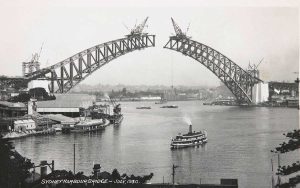The conventional starting point for genealogists is with the immediate family. We then work backwards. Step by step. Generation by generation. At some point, maybe two or three generations back, we tend to hit a metaphorical ‘brick wall’. There are many possible reasons for this. Not all records can be found. Records may no longer exist. A person may have changed names. Perhaps a couple were never married. Someone might have emigrated.
DNA is, at least in theory, an excellent tool. Based on the degree of match with my DNA sample, the providers (such as Ancestry, MyHeritage, 23andMe etc.) suggest that a particular person may be a fourth cousin. However, there is always significant uncertainty. Throw in half cousins and those who are once removed and the search area expands significantly. To these uncertainties, we can add the inherent randomness by which DNA is passed down. It is an imperfect process. Scientists will always qualify their findings by quoting a probability figure. For example, in a criminal case, the chances of a random match occurring might be cited as one in 20 million. It is also important to realise that criminal cases use highly sophisticated, and very expensive, DNA testing techniques. Even after accepting the downsides, any information that might break down a ‘brick wall’ is welcome. We have some new lines of enquiry to follow. We know that there is a connection. We do not know the details. Conventional research works backwards in time. DNA matches require working both forwards and backwards in time. The hope is that the two approaches meet in the middle. Hence the illustration. (And influenced by a recent holiday to Australia!)
I accept that very few people are as obsessive about their research as me. Many people are happy to be given a breakdown of their ethnicity. I have attempted to contact a number of my ‘matches’ with no reply being received. Many others have not uploaded any family tree information. In terms of the photo, this is the equivalent of building the bridge out from one side and then discovering that the foundations have only just started on the other side.
Even discovering fellow enthusiasts does not guarantee success. I am developing a significant amount of information about relatives that migrated to America both before and after the Great Famine. We can connect the various American strands together. What we are still trying to do is link them back to my Roscommon ancestors. There is a gap in the bridge! It took eight years to build Sydney Harbour Bridge. Perhaps I should be more patient.

